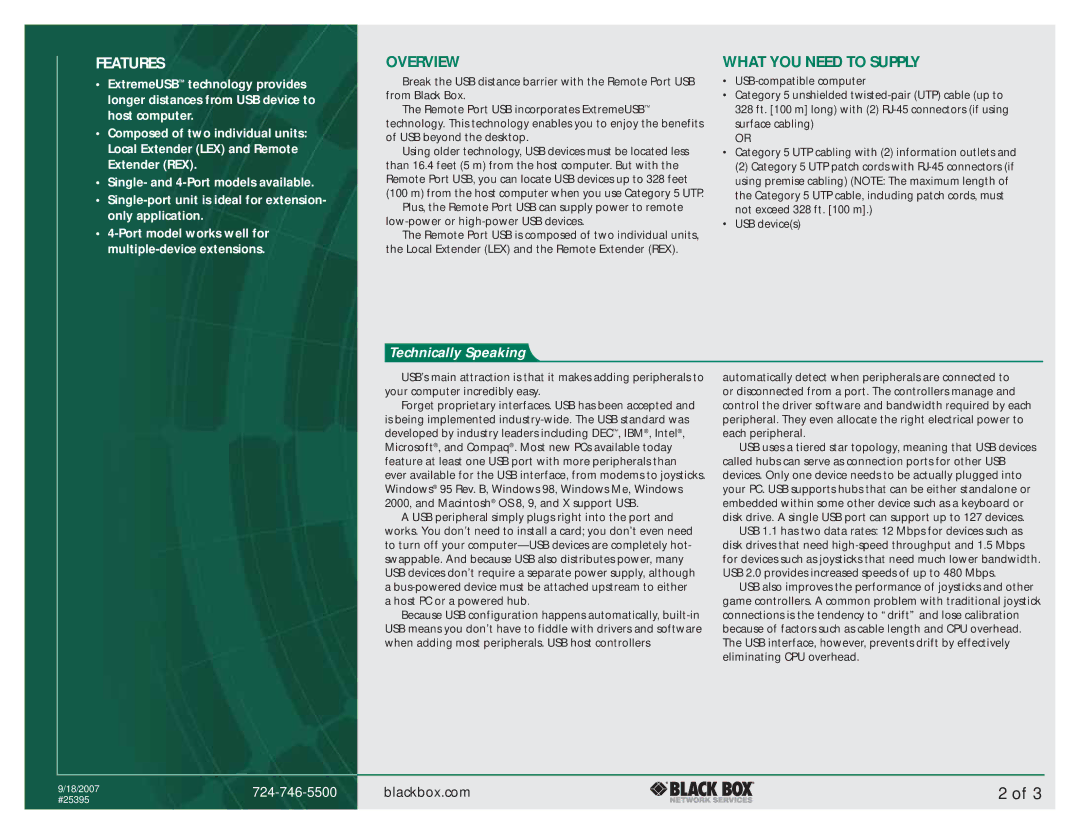
FEATURES
•ExtremeUSB™ technology provides longer distances from USB device to host computer.
•Composed of two individual units: Local Extender (LEX) and Remote Extender (REX).
•Single- and
•
•
OVERVIEW
Break the USB distance barrier with the Remote Port USB from Black Box.
The Remote Port USB incorporates ExtremeUSB™ technology. This technology enables you to enjoy the benefits of USB beyond the desktop.
Using older technology, USB devices must be located less than 16.4 feet (5 m) from the host computer. But with the Remote Port USB, you can locate USB devices up to 328 feet (100 m) from the host computer when you use Category 5 UTP.
Plus, the Remote Port USB can supply power to remote
The Remote Port USB is composed of two individual units, the Local Extender (LEX) and the Remote Extender (REX).
WHAT YOU NEED TO SUPPLY
•
•Category 5 unshielded
OR
•Category 5 UTP cabling with (2) information outlets and
(2) Category 5 UTP patch cords with
•USB device(s)
Technically Speaking
USB’s main attraction is that it makes adding peripherals to your computer incredibly easy.
Forget proprietary interfaces. USB has been accepted and is being implemented
A USB peripheral simply plugs right into the port and works. You don’t need to install a card; you don’t even need to turn off your
Because USB configuration happens automatically,
automatically detect when peripherals are connected to or disconnected from a port. The controllers manage and control the driver software and bandwidth required by each peripheral. They even allocate the right electrical power to each peripheral.
USB uses a tiered star topology, meaning that USB devices called hubs can serve as connection ports for other USB devices. Only one device needs to be actually plugged into your PC. USB supports hubs that can be either standalone or embedded within some other device such as a keyboard or disk drive. A single USB port can support up to 127 devices.
USB 1.1 has two data rates: 12 Mbps for devices such as disk drives that need
USB also improves the performance of joysticks and other game controllers. A common problem with traditional joystick connections is the tendency to “drift” and lose calibration because of factors such as cable length and CPU overhead. The USB interface, however, prevents drift by effectively eliminating CPU overhead.
9/18/2007 | blackbox.com | ||
#25395 | |||
|
|
2 of 3
